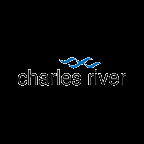Charles River Laboratories is navigating a challenging demand environment while implementing significant cost-saving measures. The company's long-term strategic positioning and improving biotech demand provide some optimism, but ongoing revenue declines and uncertain pharma demand recovery pose risks.
Analysis Date: February 19, 2025
Last Updated: March 11, 2025
Trailing Twelve Months (TTM) values provide a view of the company's performance over the last year.
Graham Value Metrics
Benjamin Graham's value investing approach focuses on finding stocks with a significant margin of safety between their intrinsic value and market price.
Intrinsic Value
Estimated fair value based on Graham's formula
$2.99
Current Market Price: $136.91
IV/P Ratio: 0.02x (>1.0 indicates undervalued)
Margin of Safety
Gap between intrinsic value and market price
-4473.0%
Graham recommended a minimum of 20-30% margin of safety
Higher values indicate a greater potential discount to fair value
ROE: 0.33542959716408777
ROA: -2.839229604913165
Gross Profit Margin: 31.82529631561962
Net Profit Margin: 0.3024452659007222
Trailing Twelve Months (TTM) values provide a view of the company's performance over the last year.
Decent Gross Profit Margin
0.3183
Gross Profit Margin
The gross profit margin of 31.83% reflects a healthy ability to generate profit from sales before accounting for operating expenses.
Low Net Profit Margin
The net profit margin of 0.30% is very low, indicating that the company struggles to convert revenues into actual profit, which raises concerns about cost control and overall profitability.
Low Return on Equity
The return on equity (ROE) of 0.34% suggests that the company is not generating a satisfactory return on shareholders' equity, indicating inefficiency in using capital.
About Profitability Metrics
Profitability metrics measure a company's ability to generate earnings relative to its revenue, operating costs, and other relevant metrics. Higher values generally indicate better performance.
Return on Equity (ROE)
Measures how efficiently a company uses its equity to generate profits
0.34%
10%
15%
Higher values indicate better returns for shareholders
TTM (as of 2025-04-16)
Return on Assets (ROA)
Measures how efficiently a company uses its assets to generate profits
-2.84%
3%
7%
Higher values indicate better asset utilization
TTM (as of 2025-04-16)
Gross Profit Margin
Percentage of revenue retained after accounting for cost of goods sold
31.83%
20%
40%
Higher values indicate better efficiency in production
TTM (as of 2025-04-16)
Net Profit Margin
Percentage of revenue retained after accounting for all expenses
0.30%
8%
15%
Higher values indicate better overall profitability
TTM (as of 2025-04-16)
Manageable Debt Levels
0.7869
Debt-to-Equity Ratio
0.3618
Debt-to-Assets Ratio
The debt-to-equity ratio of 0.79 and debt-to-assets ratio of 0.36 indicate that the company manages its debt levels relatively well, suggesting a balanced approach to financing.
Good Liquidity Ratios
The current ratio of 1.41 and quick ratio of 1.13 suggest that the company has sufficient short-term assets to cover its short-term liabilities, indicating solid liquidity.
Low Cash Ratio
The cash ratio of 0.20 indicates limited cash reserves relative to current liabilities, which could pose a risk in meeting short-term obligations.
Interest Coverage Concern
2.077
Interest Coverage Ratio
An interest coverage ratio of 2.08 suggests that the company only barely covers its interest expenses, indicating potential challenges in meeting debt obligations if earnings decline.
About Financial Health Metrics
Financial health metrics assess a company's ability to meet its financial obligations and its overall financial stability.
Debt to Equity Ratio
Total debt divided by total equity
0.78x
1.0x
2.0x
Lower values indicate less financial leverage and risk
Less than 1.0 is conservative, 1.0-2.0 is moderate, >2.0 indicates high risk
Q4 2024
Current Ratio
Current assets divided by current liabilities
1.41x
1.0x
2.0x
Higher values indicate better short-term liquidity
Less than 1.0 is concerning, 1.0-2.0 is adequate, greater than 2.0 is good
Q4 2024


